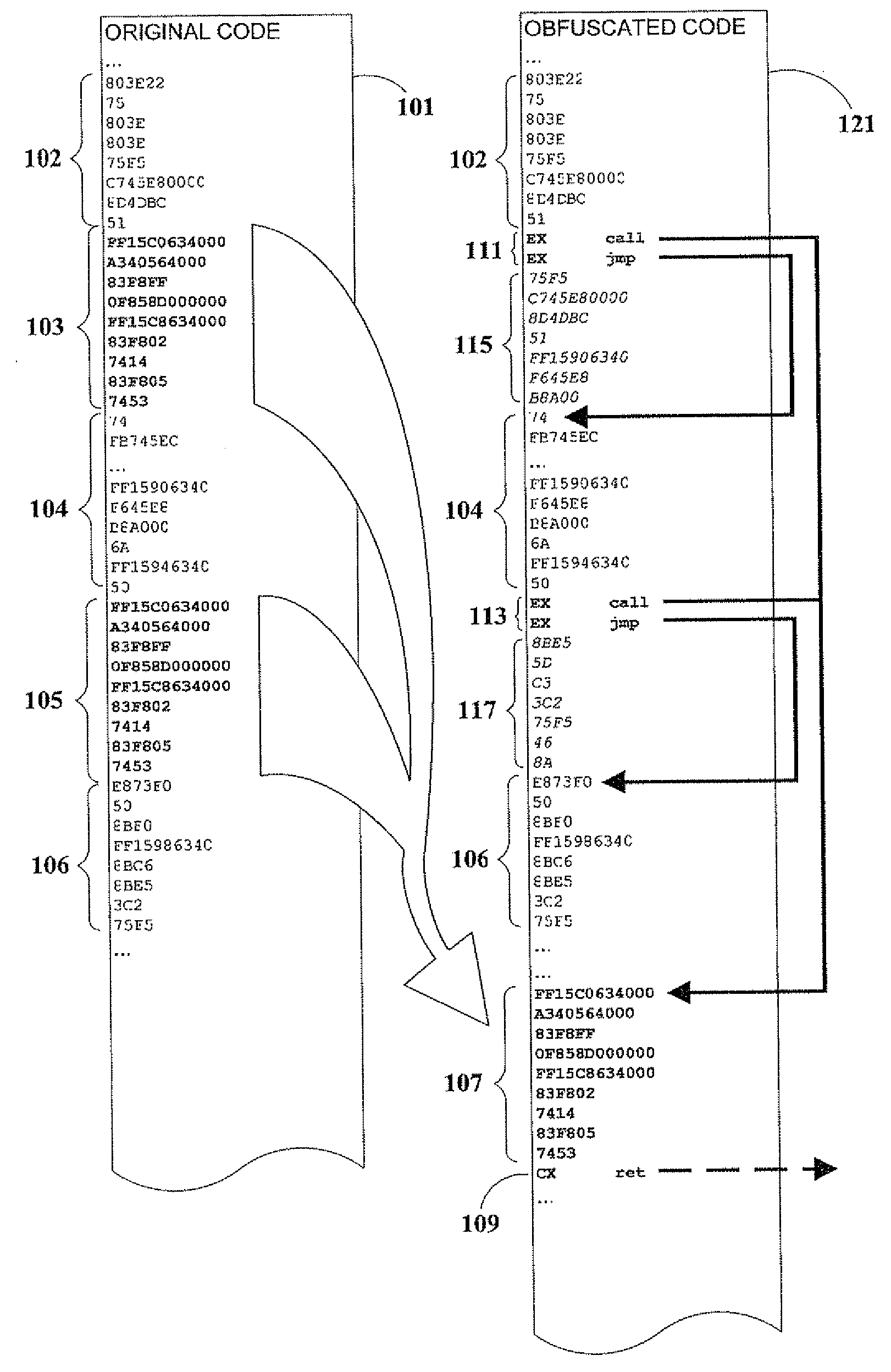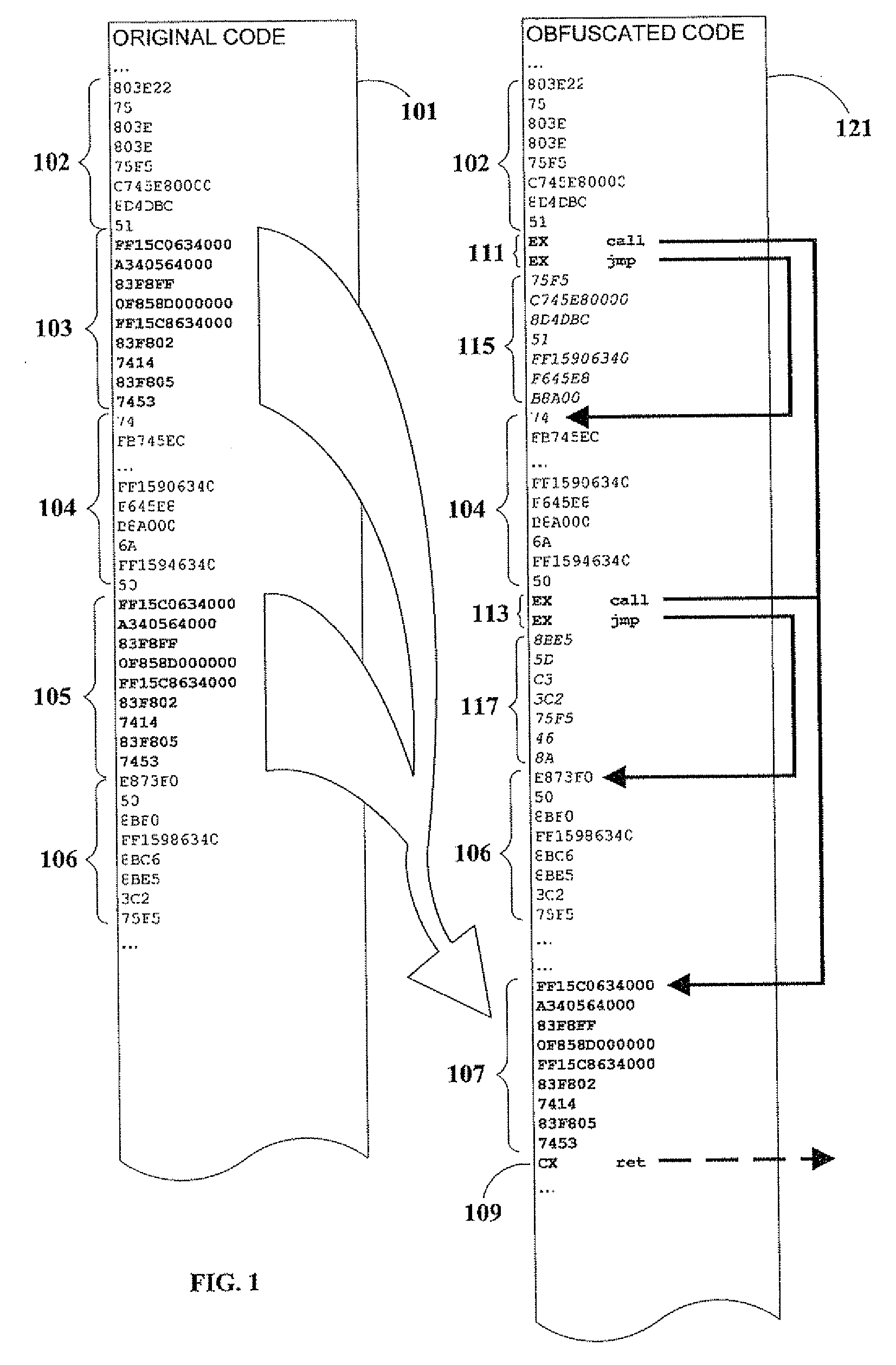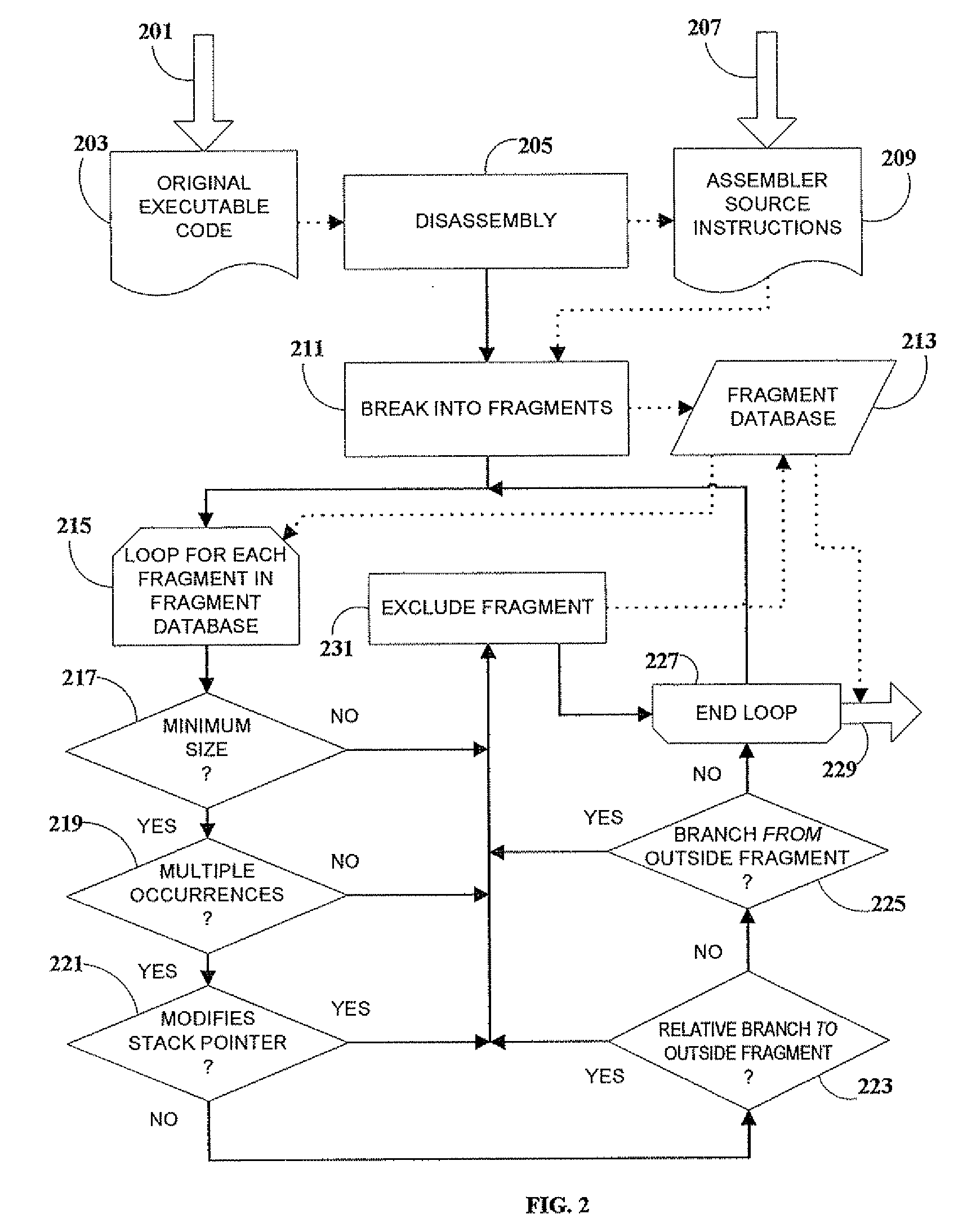Code Obfuscation By Reference Linking
- Summary
- Abstract
- Description
- Claims
- Application Information
AI Technical Summary
Benefits of technology
Problems solved by technology
Method used
Image
Examples
embodiment
Variations
[0055]As previously noted, in an embodiment of the present invention, a branch (such as a call or jump) can be computed rather than literal, so that a disassembler will not indicate the actual program flow.
[0056]Moreover, in another embodiment of the present invention, expansion of assembler source instructions 209 is minimized by having step 307 copy a small fragment into the unused code area of a previously-relocated larger fragment (in place of decoy code). This process is herein denoted as interleaving of fragments. In a related embodiment, fragment database 213 is sorted in order of descending fragment size to facilitate this particular embodiment.
[0057]In a further embodiment of the present invention, fragments are considered similar if they have identical program action when assembled into executable code, even though their code may exhibit superficial non-functional differences, such as in the order of instruction execution. A non-limiting example of this is as fol...
PUM
 Login to View More
Login to View More Abstract
Description
Claims
Application Information
 Login to View More
Login to View More - R&D
- Intellectual Property
- Life Sciences
- Materials
- Tech Scout
- Unparalleled Data Quality
- Higher Quality Content
- 60% Fewer Hallucinations
Browse by: Latest US Patents, China's latest patents, Technical Efficacy Thesaurus, Application Domain, Technology Topic, Popular Technical Reports.
© 2025 PatSnap. All rights reserved.Legal|Privacy policy|Modern Slavery Act Transparency Statement|Sitemap|About US| Contact US: help@patsnap.com



